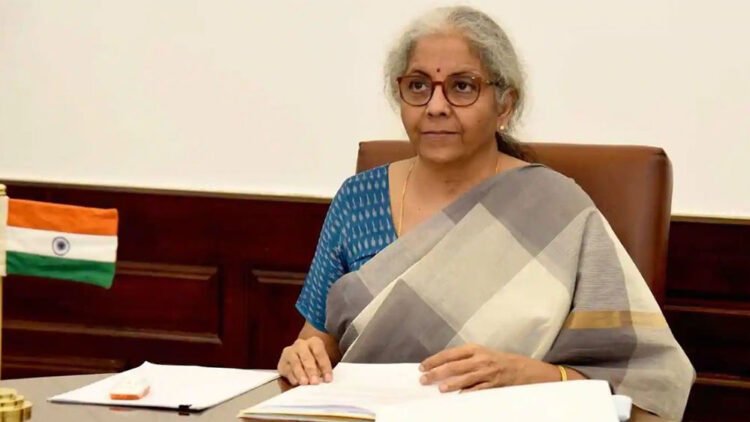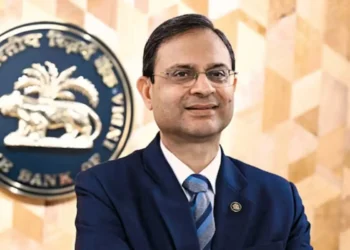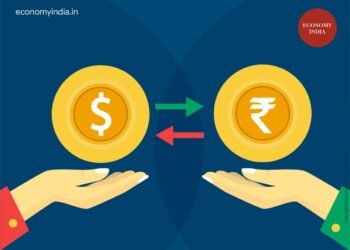Visakhapatnam (Economy India): India’s economy is set to gain a major boost as Finance Minister Nirmala Sitharaman announced that the next-generation Goods and Services Tax (GST) reforms have effectively infused ₹2 lakh crore into the economy. This liquidity, she said, has resulted in higher disposable incomes for citizens and greater financial freedom for businesses.
The Finance Minister was speaking at a high-level discussion on GST reforms, where she outlined the structural tax changes implemented by the government and their far-reaching impact on growth, demand, and industry competitiveness.
Rationalisation of GST Slabs: A Historic Step
One of the most significant highlights of the GST overhaul has been the rationalisation of tax slabs. Sitharaman explained that under the reforms, 99% of items that were earlier taxed at 12% GST are now brought under the 5% slab. This reduction is expected to provide direct relief to households, as the cost of commonly consumed goods has fallen considerably.
Equally noteworthy is the revision of the highest slab. Earlier, a large number of goods were taxed at 28%, leading to higher consumer prices and compliance pressure. The reforms have now shifted 90% of such goods into the 18% category, thereby reducing the tax burden across industries ranging from automobiles to appliances.
Empowering Consumers with Higher Disposable Income
The Finance Minister stressed that the government’s aim behind GST rationalisation was not just simplification but also enhancing consumer purchasing power.
“With these reforms, nearly ₹2 lakh crore has remained in the hands of the people instead of flowing into tax collections. This money is now directly fueling household consumption, savings, and investment,” Sitharaman said.
Economists agree that this liquidity will have a multiplier effect on the economy, encouraging more spending and creating new opportunities for industries to grow. The move is also expected to expand the tax base in the long run as higher demand translates into higher volumes of goods sold.
Boost to Small Businesses and MSMEs
Small businesses, especially Micro, Small and Medium Enterprises (MSMEs), are among the biggest beneficiaries of the GST reforms. Reduced tax slabs mean lower compliance costs and fewer working capital blockages, allowing businesses to reinvest more capital into expansion and employment generation.
Experts note that the simplification of the GST structure will also improve ease of doing business. With fewer slab complexities and reduced tax rates, MSMEs are expected to thrive in both domestic and export markets.
GST Reforms and India’s Economic Growth Path
The infusion of ₹2 lakh crore into the economy comes at a time when India is positioning itself as one of the fastest-growing major economies globally. Lower tax burdens on consumers and industries are expected to:
- Stimulate domestic demand, particularly in consumer goods, retail, and services.
- Encourage investment in manufacturing and exports, boosting competitiveness.
- Support employment growth, as businesses expand due to reduced tax liabilities.
- Contribute to sustained GDP growth, by widening the tax base and compliance.
Economists predict that India’s GDP growth trajectory could gain additional momentum as disposable income rises and inflationary pressures ease.

Alignment with Atmanirbhar Bharat and Global Competitiveness
Sitharaman also linked the GST reforms with the broader vision of Atmanirbhar Bharat (Self-Reliant India). By lowering costs for manufacturers and exporters, India’s products are expected to gain a stronger footing in global markets.
“Tax reforms are not just about revenue collection. They are about creating an ecosystem where businesses can grow competitively, consumers can spend confidently, and India can stand strongly on the global stage,” she said.
Political and Policy Significance
The Finance Minister’s announcement is also significant in the context of political and economic policy-making. By reducing tax burdens, the government has sent a clear message of being pro-growth and pro-consumer ahead of major economic reforms expected in the coming years.
At the same time, the Centre has reassured states that revenue losses from GST cuts will be compensated through better compliance and wider tax coverage. This reflects a balanced approach to fiscal management while prioritising growth.
Future of GST: A Continuous Reform Process
While celebrating the success of current reforms, Sitharaman emphasised that GST will remain a dynamic system. The government is working towards:
- Further simplification of tax slabs to reduce confusion.
- Digital integration of compliance systems to curb evasion.
- Improved coordination between Centre and States for revenue stability.
- Introduction of next-gen GST reforms aimed at transparency, efficiency, and inclusivity.
“GST reform is not a one-time event. It is a journey. Every stage of reform takes us closer to a tax system that is fairer, simpler, and growth-oriented,” Sitharaman said.
Expert Reactions to the GST Overhaul
Industry bodies and economists have largely welcomed the announcement. According to the Federation of Indian Chambers of Commerce & Industry (FICCI), the reforms will “provide a much-needed boost to consumer confidence and demand revival at a time when global economic uncertainties remain high.”
Analysts also believe that this rationalisation will help India improve its Ease of Doing Business Index, attract more foreign investment, and strengthen its role in global supply chains.
A Reform That Empowers People and the Economy
The GST reforms spearheaded by Finance Minister Nirmala Sitharaman mark one of the most significant structural changes in India’s taxation system since the introduction of GST in 2017. By rationalising slabs, lowering consumer tax burdens, and injecting ₹2 lakh crore into the economy, the reforms have created a win-win scenario for both citizens and businesses.
With higher disposable income in the hands of people, lower operational costs for industries, and improved competitiveness for exports, the GST reforms are set to play a central role in shaping India’s growth story in the years ahead.
As Sitharaman put it, “Instead of being absorbed in taxes, this money is contributing directly to growth, investment, and consumption.”
(Economy India)











